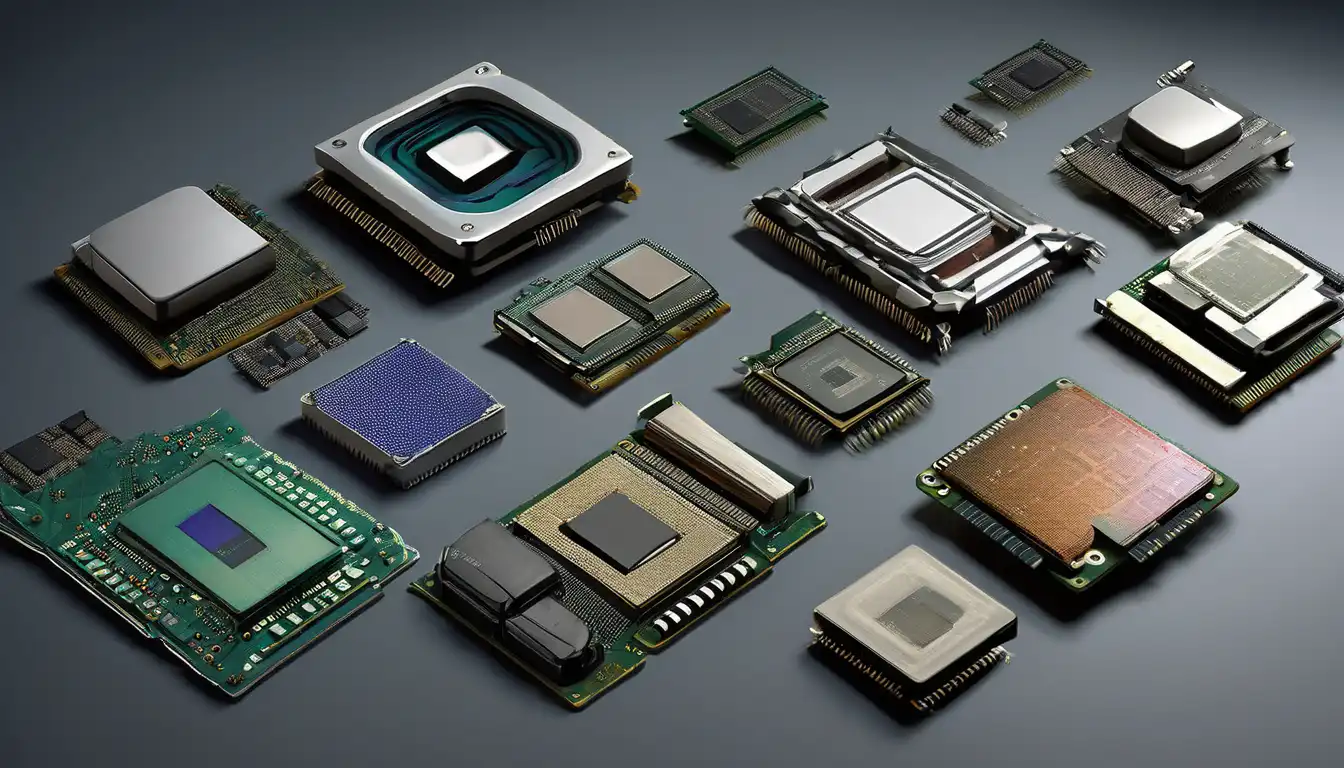The Dawn of Computing: Early Processor Technologies
The evolution of computer processors represents one of the most remarkable technological journeys in human history. Beginning with primitive vacuum tube systems in the 1940s, processors have undergone revolutionary changes that have fundamentally transformed how we live, work, and communicate. The first electronic computers, such as ENIAC, utilized thousands of vacuum tubes that consumed enormous amounts of power and required constant maintenance. These early processors operated at speeds measured in kilohertz, yet they laid the foundation for the digital revolution that would follow.
The Transistor Revolution
The invention of the transistor in 1947 by Bell Labs scientists marked a pivotal moment in processor evolution. Transistors replaced bulky vacuum tubes, offering smaller size, lower power consumption, and greater reliability. By the late 1950s, transistors had become the standard building blocks for computer processors, enabling the development of more compact and efficient computing systems. This transition paved the way for the second generation of computers, which saw significant improvements in processing speed and reliability while reducing physical size and power requirements.
The Integrated Circuit Era
The 1960s witnessed another breakthrough with the development of integrated circuits (ICs), which allowed multiple transistors to be fabricated on a single silicon chip. Jack Kilby and Robert Noyce independently developed the integrated circuit, revolutionizing processor manufacturing. This innovation led to the creation of the first microprocessors in the early 1970s, with Intel's 4004 processor representing a milestone in computing history. The 4004 contained 2,300 transistors and operated at 740 kHz, demonstrating the potential of microprocessor technology.
The Rise of Personal Computing
The 1980s marked the beginning of the personal computer revolution, driven by increasingly powerful and affordable processors. Intel's 8086 and 8088 processors powered the first IBM PCs, while competitors like Motorola and Zilog offered alternative architectures. This era saw the emergence of reduced instruction set computing (RISC) architectures, which simplified processor design and improved performance. The competition between complex instruction set computing (CISC) and RISC architectures drove rapid innovation throughout the decade.
The Microprocessor Revolution
The 1990s witnessed unprecedented growth in processor performance, largely driven by Moore's Law – the observation that transistor counts double approximately every two years. Intel's Pentium processors became household names, while AMD emerged as a serious competitor. This decade saw the introduction of superscalar architectures, which allowed processors to execute multiple instructions simultaneously. Clock speeds increased from tens of megahertz to hundreds of megahertz, while cache memory became standard features on processors.
Multi-Core Processing and Parallel Computing
As physical limitations began to constrain clock speed increases in the early 2000s, processor manufacturers shifted focus to multi-core architectures. Instead of making single cores faster, companies began integrating multiple processor cores on a single chip. This approach allowed for better performance while managing power consumption and heat generation. The transition to multi-core processing required fundamental changes in software design to leverage parallel computing capabilities effectively.
Modern Processor Architectures
Today's processors represent the culmination of decades of innovation, featuring advanced technologies like out-of-order execution, speculative execution, and sophisticated branch prediction. Modern CPUs incorporate billions of transistors and operate at clock speeds exceeding 5 GHz. The distinction between different processor architectures has blurred as manufacturers incorporate the best features from various design philosophies. Specialized processing units for graphics, artificial intelligence, and machine learning have become integral components of modern processors.
The Mobile Revolution
The rise of smartphones and tablets in the 21st century created new demands for processor design. Mobile processors prioritize power efficiency over raw performance, leading to the development of system-on-chip (SoC) designs that integrate multiple components into a single package. ARM architecture emerged as the dominant force in mobile computing, with its energy-efficient design proving ideal for battery-powered devices. The success of mobile processors has influenced desktop and server processor design, emphasizing power efficiency alongside performance.
Future Directions in Processor Technology
The evolution of computer processors continues at an accelerating pace, with several emerging technologies poised to shape the future of computing. Quantum computing represents a fundamental shift in processing paradigm, potentially solving problems that are intractable for classical computers. Neuromorphic computing, inspired by the human brain, offers new approaches to artificial intelligence and pattern recognition. Photonic computing, which uses light instead of electricity, promises dramatically faster processing speeds with lower power consumption.
Challenges and Opportunities
As processor technology advances, manufacturers face significant challenges related to physical limitations, power consumption, and heat dissipation. The end of Moore's Law necessitates innovative approaches to continue performance improvements. Three-dimensional chip stacking, new semiconductor materials like gallium nitride, and advanced packaging technologies offer potential solutions. The increasing importance of specialized processing for artificial intelligence, cryptography, and scientific computing suggests that future processors will become more heterogeneous, combining general-purpose cores with specialized accelerators.
The evolution of computer processors has transformed every aspect of modern society, from scientific research and business operations to entertainment and personal communication. Each generation of processors has built upon the innovations of its predecessors while introducing new capabilities and addressing previous limitations. As we look toward the future, the continued evolution of processor technology promises to enable new applications and capabilities that we can only begin to imagine. The journey from vacuum tubes to modern multi-core processors demonstrates humanity's remarkable capacity for innovation and our relentless pursuit of computational power.
